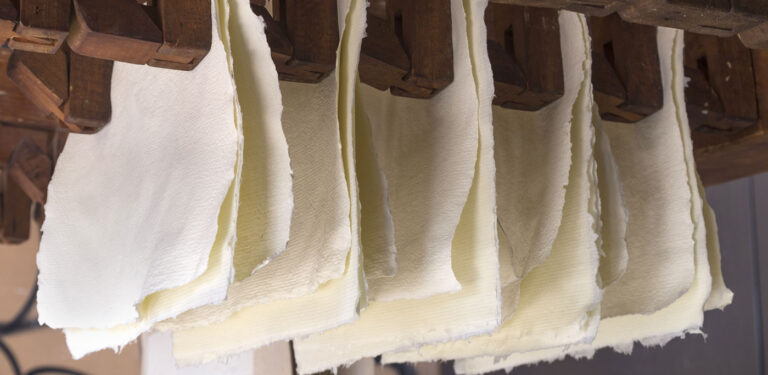

Despite living in a digital age, most of us cannot imagine a world without paper. Without paper, we would not have books, newspapers, letters, receipts, journals, and even some types of money!
The evolution of writing materials made from papyrus and parchment to tree pulp is a unique and fascinating tale. Understanding who invented paper and how it replaced previous materials will help you truly appreciate this material.
Early Steps: Papyrus Documents
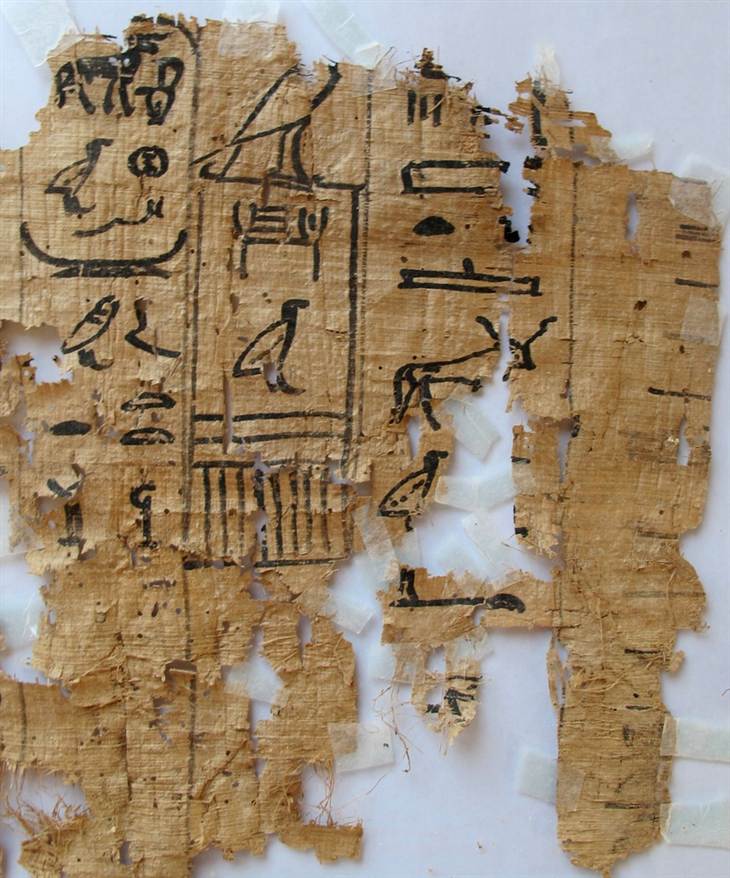
The invention of our modern tree pulp paper is a result of a direct evolution from similar writing mediums used in the past. The word “paper” itself is an evolution of the ancient Greek word papyrus, which describes sheets made of specially cultivated papyrus plants that were manufactured in ancient Egypt 6,000 years ago. The Egyptians created writing scrolls made of papyrus by stripping the soft inner core of the stalk of Cyperus papyrus, flattening the stalks, and laying them side by side. Two sheets were then laid at 90 degree angles on top of each other, with multiple glued sheets laid and glued end-to-end to create long or short rolls. The papyrus plant’s natural gum aided in sticking sheets together firmly.
Papyrus vs Parchment
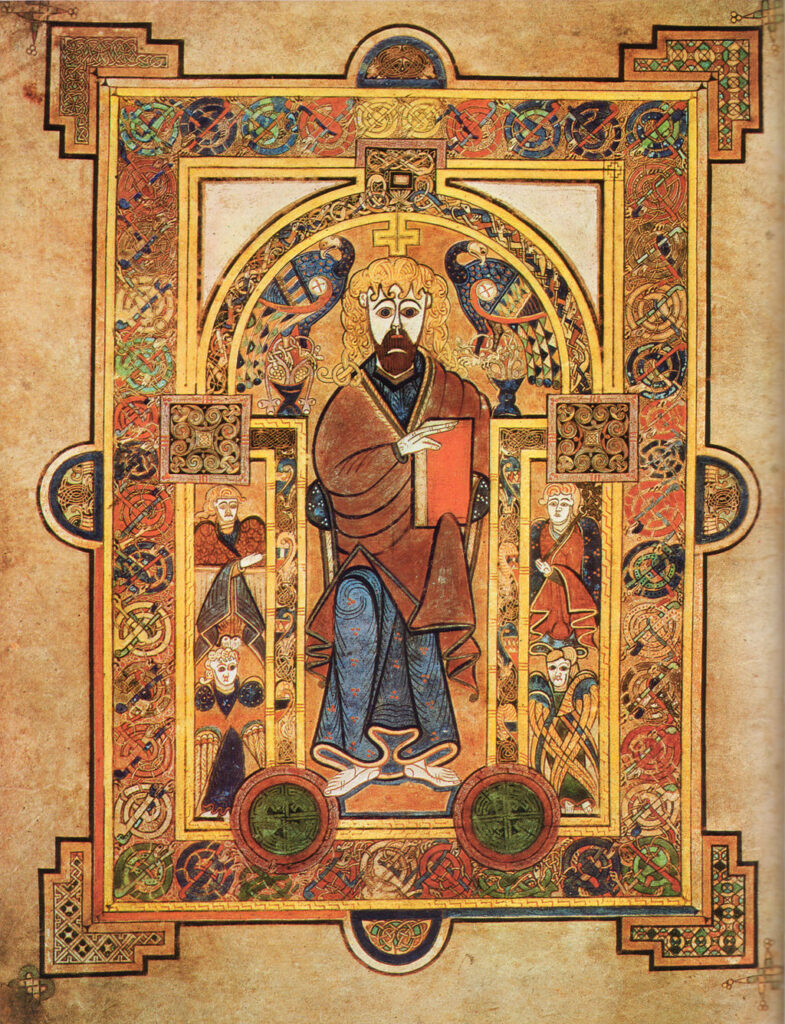
Parchment is animal skin–usually sheep, calf, or goat skin–that has been scraped of any hair and dried under tension. Vellum is higher quality parchment made specifically of calf skin (from the Latin vitulum, meaning “calf skin,” or velum, meaning “cloth,” “covering,” or “veil.”). Some scholars believe that both parchment and vellum were invented in the Greek city of Pergamon as a competitor to and replacement for papyrus. According to Pliny the Great, the nearby city of Alexandria had a monopoly on the papyrus business in the area, so the merchants and craftsman of Pergamon invented a new writing surface to combat that monopoly: parchment. This is not completely verifiable as there are Egyptian documents written on parchment that have been dated to 2500 B.C., which would predate Pergamon by centuries. Pergamon was, however, an important parchment-producing city during the heyday of the Library of Alexandria, when the papyrus plant became almost extinct due to the high demand. As a a result, Pergamon inaugurated a new library using only parchments.
The Invention of Paper
Before the invention of paper, the Chinese would inscribe their records on bone, bamboo, and silk. Unfortunately, these materials were heavy and cumbersome or, in the case of silk, expensive. Knowing the exact date of the invention of paper is almost impossible, but most scholars believe that Cai Lun, an imperial Chinese eunuch, invented paper. However, recent studies show that paper already existed in China prior to the life of Cai Lun. The first time that fibers were macerated to create paper can most likely be traced back to 2,200 years ago.
The Invention and Adoption of Paper
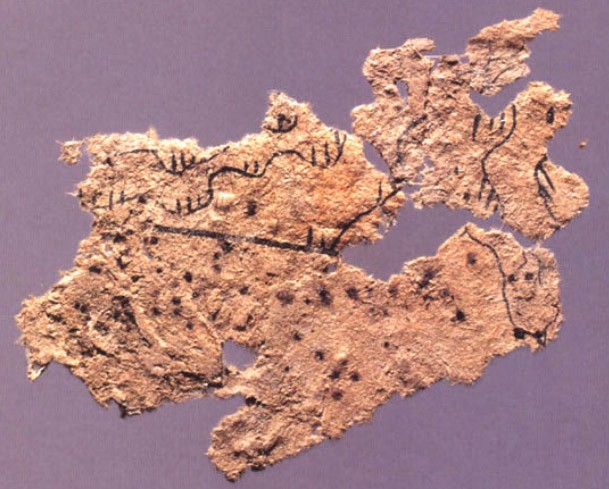
The Chinese tried to keep the art of papermaking a secret for centuries. It was by bribing Chinese prisoners with the promise of their freedom that Arabs learned the skills. Even as the knowledge of papermaking spread into Arab countries, paper did not reach Europe until 1150 A.D., when the Spanish learned to make paper during the Crusades and during Arab invasions into Spain.
In Italy, Arab prisoners apparently taught Italian artisans the craft they had recently mastered. Consequently, during the 12th and 13th centuries, paper mills started developing in Spain, France, and Italy. Vellum did remain the preferred highest-quality medium for a few more centuries until Fabriano papermakers in Italy perfected the papermaking craft through a series of experiments and technological advancements. The result of their innovations was a high-quality, resistant paper that was finally able to compete with parchment.
The Impact of Paper
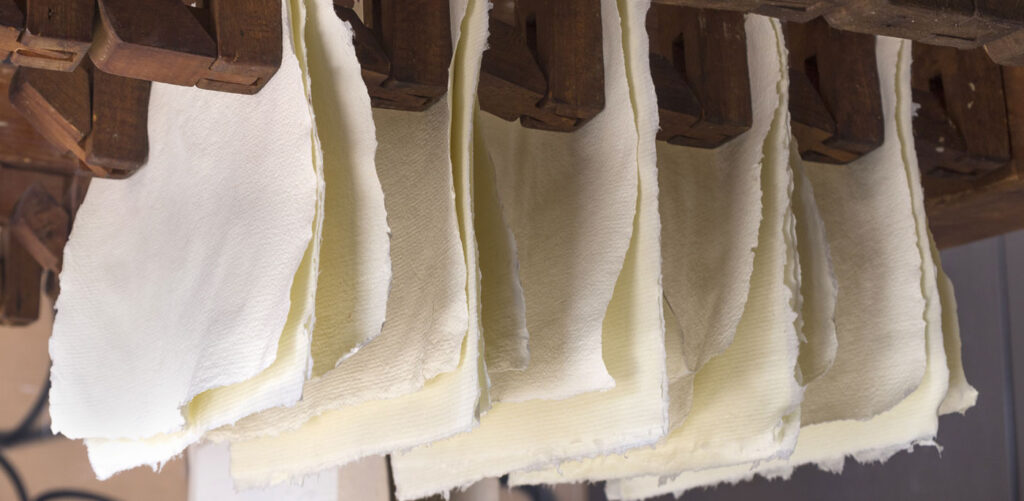
The cheaper paper made reading and writing more accessible to more people in China and Europe, and a strong reading culture developed in China. Scholars and scribes welcomed the adoption of paper, as papyrus did not lend itself well for long texts. Papyrus scrolls quickly began cracking and breaking down, making long papyrus texts less and less desirable. Christian monks and scholars tried to circumvent the problem of papyrus scrolls through the invention of books made of vellum pages. Unfortunately, vellum was a very expensive medium and could not always be used. Finally, when the quality of paper reached a more durable standard, this new medium became the best and most logical solution, and its adoption quickly reached all corners of the world. Today, paper is cheaply made and easily available all over the world.